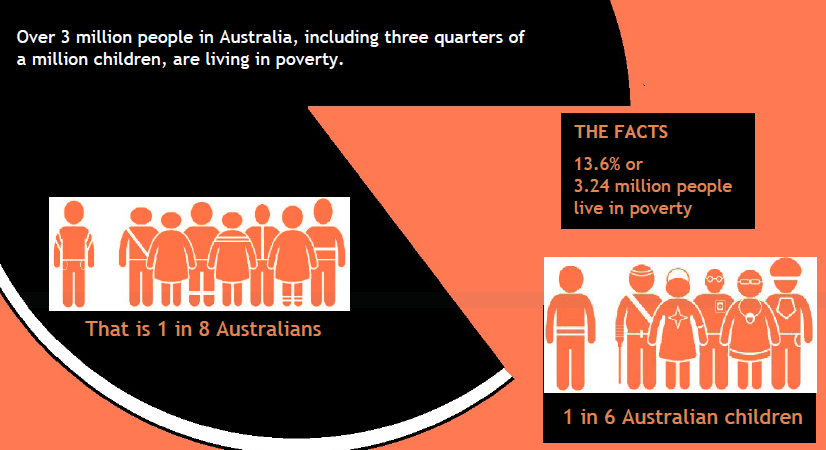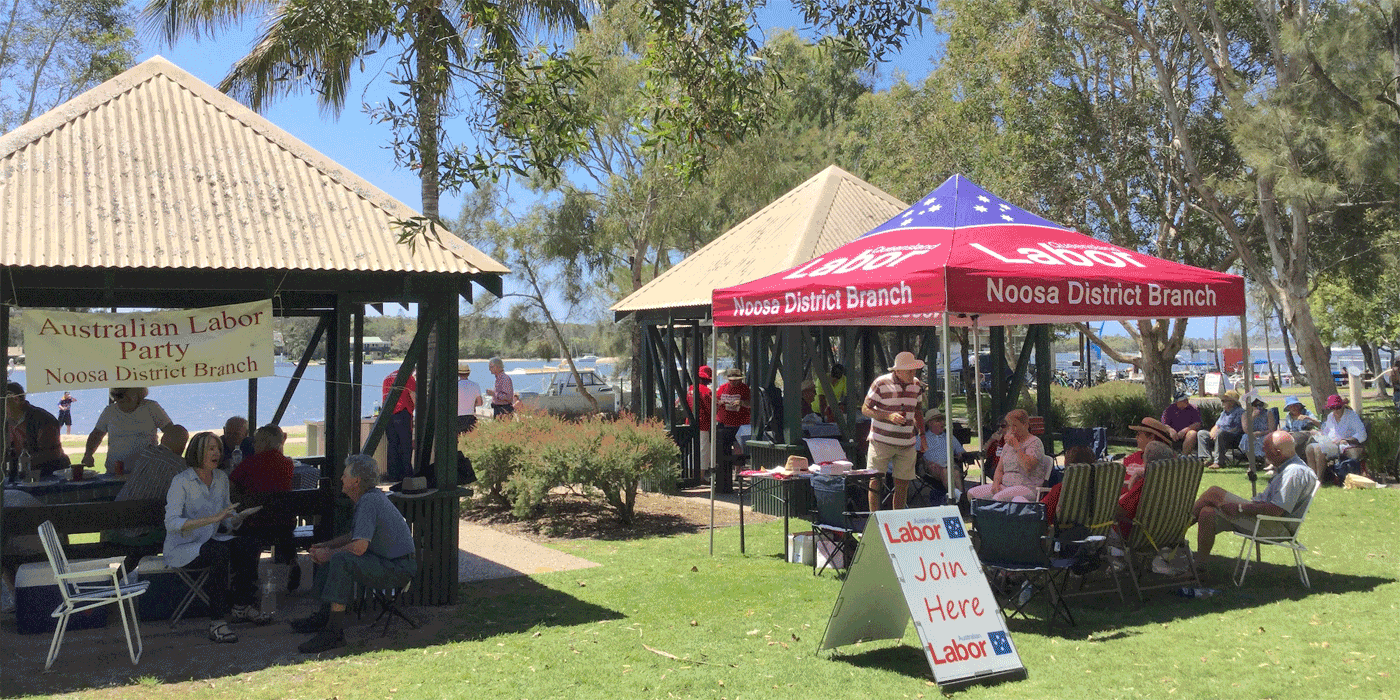
WE CAN END POVERTY
By Nicola Wilson, Noosa Branch (Wide Bay)
Australia is one of the wealthiest countries in the world. We’re ranked 12th/13th by GDP (depending on the source 1). The economy has remained stable overall during Covid, although with a negative growth in the quarter to September 20212. But we can safely say that as a nation, we’re wealthy, and that’s what we’ll generally hear the Federal Treasurer talk about.
The distribution of wealth, however, is nothing to brag about. “The Australian” published “The List” in March this year, its top 250 rich list, glorifying how much Australia’s richest people soared through the pandemic.
Together, the top 250 have a combined wealth of $470 billion, up from $377 billion last year3. There are 122 billionaires in Australia. Gina Rinehart’s wealth increased from $16 billion to $36 billion. Andrew Forrest doubled his wealth from $14 billion to $30 billion. Just in one year.
The wealthiest 20% of Australians hold around 62% of the wealth4.
The poorest 20% of households received 7% of the income (including wages and social welfare), but hold only 1% of the wealth. And they haven’t seen an increase in their “wealth” in the last 10 years4.
We are one of the wealthiest countries, but we have the 16th highest poverty rate out of the 34 wealthiest countries in the OECD – higher than the average for the OECD – and higher than the UK, Germany and New Zealand5.
We have 122 billionaires. But meanwhile, 3.2 million people in Australia live in poverty, and almost a million of those are children. This number comes from a report by the Australian Council of Social Service (ACOSS) published in 2020, and the number will have increased since publication as a result of Covid job losses and withdrawal of covid supplements6.

ACOSS defines poverty5 as earning less than 50% of median income. According to the Melbourne Institute of Applied Economic and Social Research, as of June 2021, the poverty line for a family of 4 is $1,089 per week, just under $57,000 a year7. Families earning below that live in poverty.
The likelihood of living in poverty increases for the following groups of people living in Australia8.
- Children in sole parent families – a staggering 44% now live below the poverty line, and it’s much more likely if the parent is female
- Families with children where parents are working but underemployed
- Disabled people (about 37% of those in poverty)
- Over 65s who are not homeowners, especially women
- Those born overseas (59% of adults living in poverty were born in Australia, 33% in non-English speaking countries)
- The unemployed
So it’s clear that many people living in poverty are reliant on government support to survive – whether because of lack of employment, due to their age or disability. So let’s look at Federal Government social security payments.
- Maximum welfare payments for a family of four is $871 per week versus the poverty line of $1,0897. That’s a gap of $218 per week or $11,000 per year.
- Maximum welfare payments for a single person is $385 per week versus the poverty line of $5807. That’s a gap of $195 a week, or $10,000 per year.
The government chooses to put 3 million people under the poverty line. 35% of households reliant on social security payments live in poverty6. Payments have not increased in real terms since 1994 despite the vastly increased cost of living and in particular housing.
Everybody should have enough money or resources for the basic needs of life – a home, enough food for the household, clothing, education and health expenses. With further cuts to Medicare and the PBS over the last year and the lack of affordable housing, this just keeps getting harder.
Living below the poverty line leads to homelessness, which creates a whole new cycle – not having a home limits your ability to access education, a job, or healthcare. Without these basics, vulnerable people can’t get find their own way out of poverty, they have to be supported. And of course, there is a strong correlation between poverty and poor mental health, and suicide.
According to Vinnies, not-for-profits provide around $43 billion to the Australian economy each year4 because the government chooses to keep 3 million people in poverty. Charities have become the default providers of services – accommodation for the homeless, food for refugees who are not allowed to work, electricity bills for older Australians who can’t afford to pay, significant support to the mentally ill.
Ending poverty comes at a cost, but brings financial benefits as well as the obvious benefit to society and human rights. The Vinnies report estimated there could be $2.3 billion annual savings in hospital expenditure, and $458 million in Medicare and Pharmaceutical Benefit Scheme savings4. Further savings not quantified relate to crime, anti-social behaviour, relationship breakdowns and ‘spill over’ effects.
Increasing Jobseeker during Covid gave us a unique experiment into lifting people out of poverty. Benefits were increased by up to $550 a fortnight (that’s $275 a week. Remember the gap for a family of four was $218). Suddenly, thousands of households were lifted above the poverty line.
And did that extra money get spent on drugs? No … well maybe prescribed drugs.
A report by Accenture found that “of the extra $550 a fortnight, $85 was spent on household bills, electricity, phone, water; $70 of that extra money was spent on food; around $60 was spent on clothing and household goods; around $175 was saved or used to pay down debt. They didn’t spend that money on frivolous or discretionary items. They didn’t withdraw from the labour market. They spent it well on their families and bills. And they spent it quickly, which made it a good stimulus that’s supported the economy.”9
Wow – Trickle up economics actually works!
Taking the Covid supplement away, at a time when the underemployment rate increased, threw people back below the poverty line.
Closing the gap with social security benefits would cost about $20 billion per year to start with10. But over time, lifting people out of poverty would boost the economy and create more jobs, as people are able to afford to consume more products and services. More people could access further education, leading to more skilled workers. A thriving economy leads to more infrastructure to support more services.
Added to the cost savings and other benefits already mentioned, the net cost would decrease over time.
Now I acknowledge that $20 billion is a lot of money for a government to find, but how much did the Morrison government waste in the last year on Jobseeker to profitable companies ($40 billion11), broken submarine deals ($66 billion), and now ditched helicopters ($7 billion12)? Not to mention the rorts.
Or another comparison – the Morrison government spends $4.3m per year per refugee held on Nauru13. But can’t find an extra $10,000 per household a year for people already living in this wealthy country.
One solution may be to tax those billionaires.
But however we find the cash, we need to raise the rate.
References
- https://statisticstimes.com/economy/projected-world-gdp-ranking.php
- https://www.abs.gov.au/media-centre/media-releases/economic-activity-decreased-19-september-quarter
- https://www.wsws.org/en/articles/2021/04/05/rich-a05.html
- https://www.vinnies.org.au/page/Publications/National/Articles_Reports__Speeches/Poverty-in-Australia/
- https://povertyandinequality.acoss.org.au/poverty/#poverty-definition
- https://povertyandinequality.acoss.org.au/wp-content/uploads/2020/02/Poverty-in-Australia-2020_Part-1_Overview.pdf
- https://melbourneinstitute.unimelb.edu.au/__data/assets/pdf_file/0005/3944264/Poverty-Lines-Australia-June-Quarter-2021.pdf
- https://povertyandinequality.acoss.org.au/wp-content/uploads/2020/05/Poverty-in-Australia-2020-Part-2-%E2%80%93-Who-is-affected_Final.pdf
- https://www.abc.net.au/news/2021-11-27/covid-once-in-a-lifetime-experiment-jobkeeper-wages-economy/100654538
- Author calculated as approx 2 million adults @average gap of $200 pw, this figure also quoted in the ABC article above (9)
- https://www.afr.com/rear-window/jobkeeper-wasted-40-billion-not-27-billion-but-who-s-counting-20211012-p58zeq
- https://abcnews.go.com/International/wireStory/australian-military-switches-european-us-helicopters-81667392
- https://www.theguardian.com/australia-news/2021/nov/07/cost-of-australia-holding-each-refugee-on-nauru-balloons-to-43m-a-year
